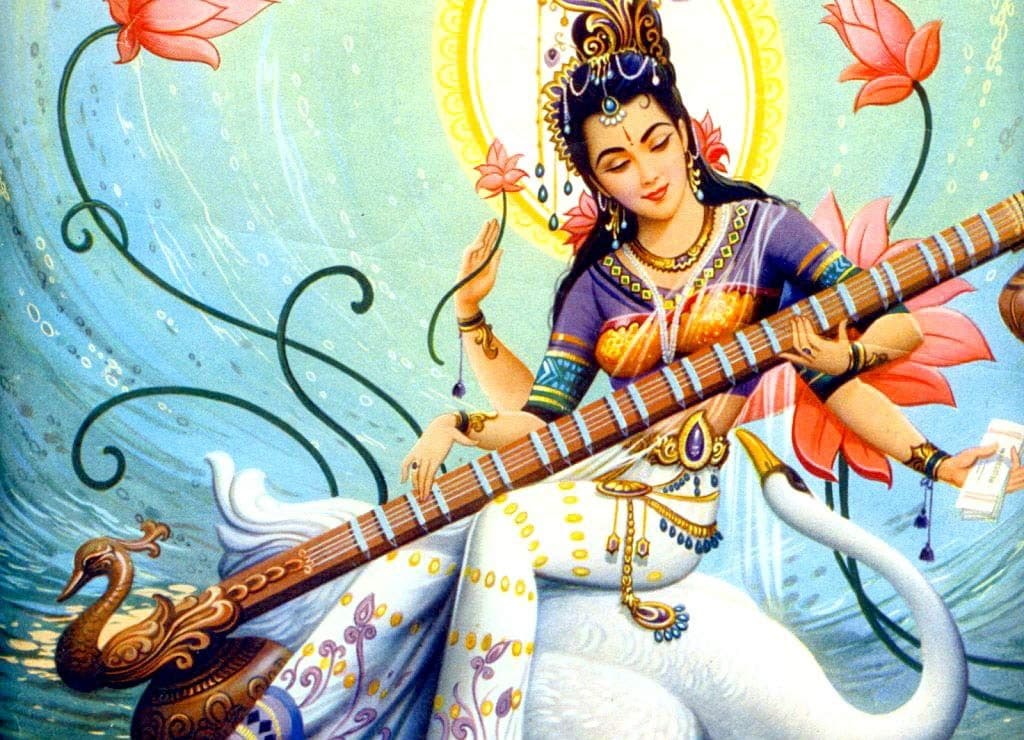
Unveiling the Melodic Heritage: Ancient Musical Instruments from India as Described in Hindu Texts
India's musical legacy is a treasure trove of diverse instruments that have evolved over millennia. Hindu texts, such as the Vedas, Upanishads, and various ancient scriptures, shed light on the origins and significance of these instruments in Indian classical music. In this comprehensive article, we will explore eight to ten ancient musical instruments from India mentioned in these texts, providing a detailed analysis of their cultural and musical contributions.
- Veena: The Veena is a quintessential stringed instrument prominently featured in Hindu texts, including the Rigveda and the Natyashastra. Symbolizing the goddess Saraswati, Veena is a source of divine inspiration and knowledge. With its resonating body, long neck, and strings that produce captivating melodies, the Veena has become a fundamental instrument in Indian classical music.

- Mridangam: The Mridangam is a versatile percussion instrument described in texts like the Sama Veda and the Natyashastra. This double-headed drum, traditionally made of animal skin, holds immense significance in Indian classical music. Played with hands, the Mridangam enriches performances with intricate rhythmic patterns, elevating the melodic and rhythmic complexities of the music.

- Shankha: The Shankha, or conch shell, occupies a sacred place in Hindu mythology and rituals. Depicted in texts such as the Mahabharata and the Vishnu Purana, the Shankha represents the primordial sound of creation and is blown during auspicious ceremonies, prayers, and temple rituals. Its resonant and powerful tones awaken the divine forces and invoke spiritual harmony.

- Pakhawaj: The Pakhawaj, also known as Mardal, is a double-headed drum mentioned in texts like the Natyashastra and the Sangeet Ratnakara. Considered the precursor to the modern tabla, the Pakhawaj is primarily associated with dhrupad, the oldest form of Hindustani classical music. It produces a deep and resonant sound, enhancing the rhythm and texture of classical compositions.

- Flute: The Flute, or Venu or Bansuri, holds a significant place in Hindu texts, particularly in the Krishna Leela. Lord Krishna's enchanting melodies played on the Flute mesmerize all beings. Crafted from bamboo with six to eight finger holes, the Flute produces ethereal and soul-stirring tones, making it an indispensable instrument in Indian classical and devotional music.

- Nadaswaram: The Nadaswaram, also called Nagaswaram, finds mention in texts like the Silappadikaram and the Thiruppugazh. This classical wind instrument is renowned for its powerful and resonant sound. Often played in temples and during auspicious occasions in South India, the Nadaswaram's unique timbre and ability to produce microtones contribute to the distinct soundscapes of Indian classical music.

- Tabla: The Tabla is a percussion instrument that has gained immense popularity in both classical and contemporary Indian music. Although not explicitly mentioned in ancient Hindu texts, its evolution can be traced back to the Pakhawaj. Comprising a pair of drums, the Tabla produces a wide range of rhythmic patterns and intricate compositions, making it an essential instrument in various genres of Indian. music

- Shehnai: The Shehnai, a wind instrument mentioned in the Sangeet Ratnakara, has a distinct and hauntingly beautiful sound. Traditionally associated with auspicious occasions such as weddings and processions, the Shehnai's soulful melodies evoke deep emotions. Its unique timbre and ability to produce microtones make it an enchanting instrument in North Indian classical and folk music.

- Dholak: The Dholak, a double-headed hand drum, finds mention in the Natyashastra and the Sangita Makaranda. Widely used in Indian folk music, devotional music, and celebratory events, the Dholak produces rhythmic beats that inspire movement and joy. Its versatility and infectious energy have made it a beloved instrument across various regional music traditions.

- Sitar: The Sitar, a revered Indian classical instrument mentioned in Hindu texts such as the Natyashastra and the Sangeet Ratnakara, holds a special place in the hearts of music enthusiasts. It is believed that the celestial sage Narada Muni, renowned for his divine musical abilities, played the Sitar to enthrall gods and celestial beings with its enchanting melodies. This association with sage Narada and its mention in ancient texts further deepens the spiritual and cultural significance of the Sitar, as it continues to captivate audiences with its soul-stirring soundscapes, intricate ragas, and timeless melodies.

Conclusion: Exploring the musical instruments mentioned in Hindu texts unveils a melodic heritage that has shaped Indian classical and devotional music. From the divine Veena to the rhythmic beats of the Dholak, these instruments have not only preserved ancient traditions but also continue to inspire modern musicians. Their unique characteristics, diverse timbres, and cultural significance reflect the depth and richness of India's musical legacy. By delving into their origins and roles, we gain a deeper appreciation for the profound influence these instruments have had on Indian music throughout history.

